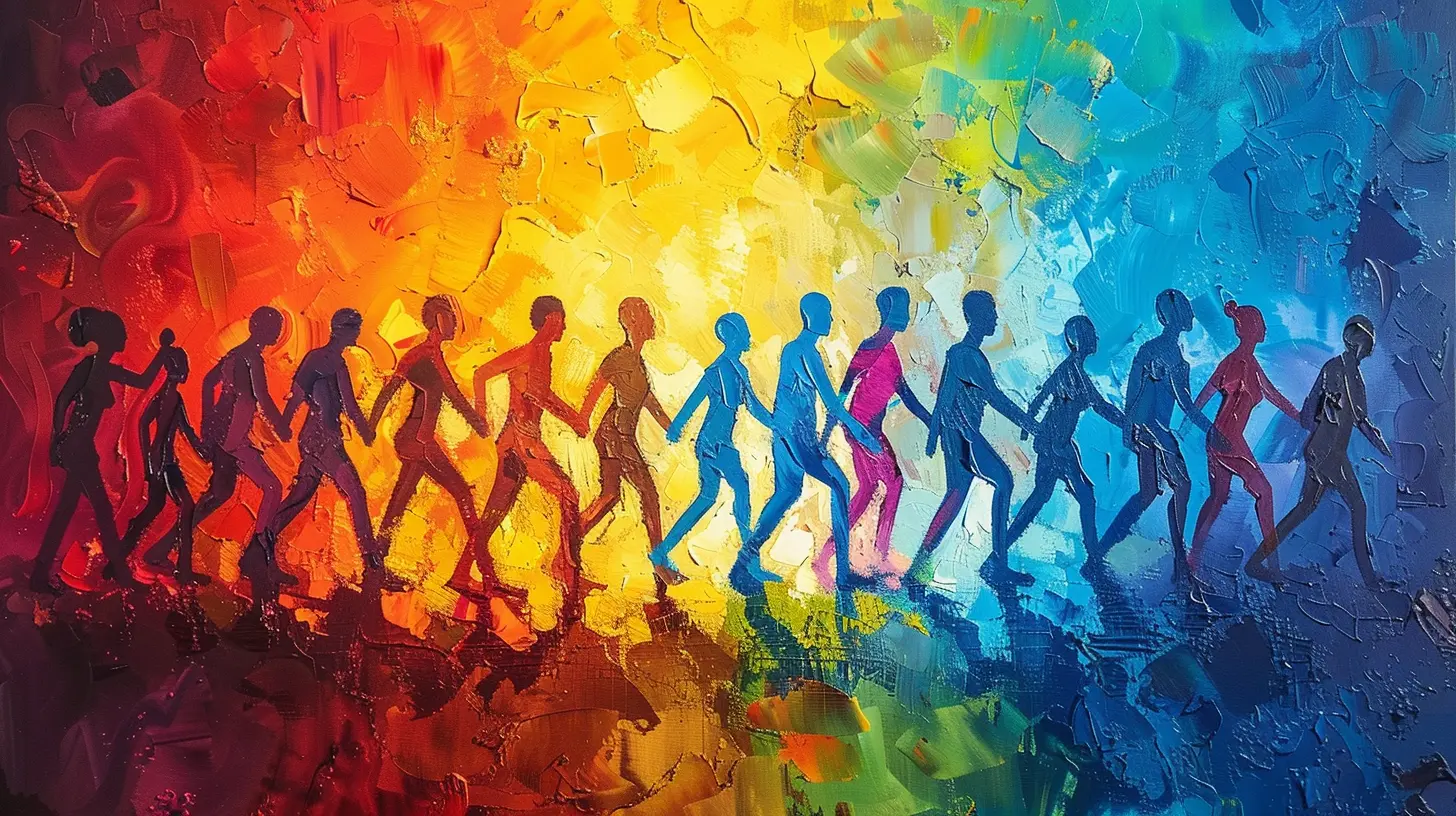The Influence of Group Dynamics on Leadership Styles
25 June 2025
Ever walked into a room full of people and noticed how the mood, interactions, and overall vibe just hit you? That’s group dynamics at play. Now, imagine you’re the person in charge of that group. How do these shifting energies and behaviors influence the way you lead? Well, that’s what we're diving into today — how group dynamics shape, mold, and sometimes outright transform leadership styles.
Let’s be real: leading isn't just about barking orders or laying down strategy. Leading is about people — messy, emotional, brilliant, unpredictable people. And when you throw a whole bunch of them into a group, things get real interesting. Whether you’re managing a chill startup team or handling a chaotic classroom full of teenagers, group dynamics can make or break your leadership game.

What Are Group Dynamics, Anyway?
Before we go too far down the rabbit hole, let’s pin down what we mean by "group dynamics." Simply put, group dynamics are the behavioral and psychological processes that occur within a social group — or between social groups.Ever noticed how some groups naturally vibe while others constantly clash? That’s a result of group dynamics at work. It involves roles people assume, communication patterns, decision-making processes, conflicts, alliances, and even unspoken rules. It’s like the “social chemistry” of the group.

Why Leadership Style Isn’t One-Size-Fits-All
Some leaders are the “let’s brainstorm over coffee” type. Others are more “here’s the plan — execute it.” Neither approach is right or wrong; they’re just different. But here’s the kicker: the way a group behaves can nudge a leader to adjust their style.Think about it — if you’re managing a highly independent, skilled team of self-starters, micromanaging them will only frustrate everyone. On the flip side, a team that’s new, uncertain, or disorganized might actually need more directive leadership to get things moving.
Leadership styles are dynamic, not static. Great leaders read the room and adapt.

The Big Leadership Styles (And How Groups Influence Them)
Let’s quickly recap some common leadership styles before we dive into how group dynamics mess with them (in both good and bad ways). Each one works best in specific group situations.1. Authoritative (a.k.a. The Visionary)
This leader lays out a big-picture vision and guides the group toward it, typically with confidence and clarity.How group dynamics influence it:
This works great when the group is looking for direction — like a team going through change or a crisis. But if the group is full of strong-willed individuals who want a say in every decision, an authoritative leader might come off as a dictator. That could cause rebellion or passive-aggressive resistance.
2. Democratic (a.k.a. The Collaborator)
These leaders love input and thrive on consensus. They open the floor for ideas and make decisions collectively.How group dynamics influence it:
This works wonders in groups full of diverse thinkers who are motivated and collaborative. But if the group lacks direction or is conflict-prone, democratic leaders might struggle to keep things on track. Paralysis by analysis, anyone?
3. Laissez-faire (a.k.a. The Hands-Off Boss)
This leader trusts the team to figure things out and only steps in when necessary.How group dynamics influence it:
This style rocks when the group is experienced and autonomous. But if the team lacks discipline, goals, or cohesion, things can spiral into chaos quickly. It’s like handing car keys to a toddler — not pretty.
4. Transactional (a.k.a. The Deal-Maker)
This leader focuses on structured tasks, rewards, and consequences. It's "you do this, you get that."How group dynamics influence it:
Perfect for a goal-driven group that thrives on structure. But if the group is emotionally driven or deeply creative, transactional leadership can feel cold or stifling. You can’t bribe your way to innovation.
5. Transformational (a.k.a. The Motivator)
These leaders inspire change. They work to elevate the team’s goals and personal growth.How group dynamics influence it:
This works well in groups open to self-improvement and innovation. But if the group is resistant to change or prefers the status quo, transformation talk can fall on deaf ears.

The Feedback Loop: How Groups and Leaders Influence Each Other
Here’s where it gets really juicy — the relationship between group dynamics and leadership styles isn’t one-way. It’s a loop. A two-way street. A dance (and sometimes a tug-of-war).Leaders Shape the Group
A commanding leader might create a more disciplined environment. A laid-back leader might encourage informal interactions. Over time, the leader’s consistent behavior becomes “how we do things around here.”Groups Shape the Leader
But let’s not ignore the reverse. A group can push a leader to change. A once laid-back leader might tighten the reins when the group goes off the rails. A once rigid leader might loosen up when they realize their team needs more autonomy.It’s not weakness; it’s adaptability. And it’s crucial.
Role of Social Norms and Peer Pressure
Group dynamics also bring in social norms — the unspoken rules of behavior. Ever joined a team where no one talks during meetings? That’s a norm. Or maybe one where everyone overshares every thought? Another norm.Leaders must either reinforce these norms or challenge them, depending on the group’s needs. If the team’s norms are toxic — like passive aggression, exclusion, or apathy — leaders must steer the ship elsewhere. But if the norms are healthy, leaders can ride that wave and amplify the good.
Peer pressure also plays a role. If the group favors a particular way of doing things, leaders might feel subtle (or not-so-subtle) pressure to go with the flow, even if it's not their natural style.
Conflict: The Double-Edged Sword
Conflict often gets a bad rap, but it’s not always a bad thing. Healthy conflict can spark innovation and shake up stagnant thinking. But unresolved or poorly managed conflict can destroy trust, morale, and productivity.Leadership style matters a ton here. A transformational leader might use conflict to ignite growth. A transactional leader might just try to shut it down with rules. Meanwhile, a democratic leader might mediate while seeking common ground. But if the group’s conflict level is too high, even the best leader might struggle to keep things from burning down.
Group Size and Structure: More Than Just Numbers
The size and structure of the group also play a big part in shaping leadership style.- Small groups are more intimate, and leadership tends to be more personal and informal.
- Large groups bring complexity — diverse opinions, subgroups, and politics. Leadership often becomes more structured and hierarchical.
Also, if the group is flat (everyone’s equal), leaders need to manage relationships more delicately. If it’s already hierarchical, leaders might need to focus more on directing and delegating.
Emotional Intelligence: The Secret Sauce
Here’s something that doesn’t get enough attention: emotional intelligence (EQ). A leader with high EQ reads the group’s emotional climate, senses tension before it erupts, and responds with empathy.Group dynamics are largely emotional. Trust, morale, anxiety, groupthink — these are all feelings, not just behaviors. The best leaders pick up on these unspoken emotional cues and adjust accordingly.
Just think of EQ as the leadership version of Spidey-sense.
Remote Teams and Virtual Dynamics
Now more than ever, we’re working with virtual teams. And guess what? Group dynamics don’t magically disappear on Zoom.In fact, they get trickier. You lose body language, spontaneous hallway chats, and non-verbal feedback. Leaders now have to work harder to build trust, manage conflict, and keep the group cohesive.
Leadership styles often shift in remote settings — you might see more structure, scheduled check-ins, or overly flexible boundaries. Whatever the case, the group’s virtual behaviors push leaders to adapt all over again.
Culture Matters, Too
Whether it’s national culture or organizational culture, the background of the group influences everything. A group raised in a collective culture might expect more communal leadership. An individualistic culture might favor autonomy.So yes, context is king. Or maybe queen. Either way, it matters.
Real-Life Example: The Startup vs. The Corporate Team
Let’s paint two simple pictures:A Startup Team
- Small group- Everyone wears multiple hats
- Informal relationships
- High energy, low structure
This group probably responds better to transformational or democratic leadership. Flexibility and innovation win out here. A strict, rules-based leader would probably get eaten alive.
A Corporate Department
- Large group- Clear role definitions
- Layers of management
- Emphasis on efficiency
This crew might need more transactional or authoritative leadership to keep things running smoothly. The founder-style “let’s wing it” leader would likely get lost in the bureaucracy.
Different groups. Different vibes. Different leadership responses.
So, What Does This All Mean?
At the end of the day, don’t fall in love with just one leadership style. Fall in love with understanding your group.- Are they motivated or burned out?
- Are they collaborative or competitive?
- Are they clear on their goals or flailing in confusion?
Based on those answers, adjust how you lead. Be a chameleon, not a statue.
Final Thoughts
Group dynamics aren’t just some academic jargon — they’re the pulse of every team, club, office, or project. And if you’re in a leadership role, ignoring group dynamics is like flying blind in a storm.The smartest leaders stay tuned in. They watch. They listen. They adapt. Because when you get the group dynamics right, your leadership style doesn’t just work — it thrives.
So next time your team feels “off,” don’t just look in the mirror. Look around the room.
all images in this post were generated using AI tools
Category:
Social PsychologyAuthor:

Jenna Richardson
Discussion
rate this article
2 comments
Marie Webster
This article provides valuable insights into how group dynamics shape leadership styles. Understanding these influences is crucial for effective leadership and team development. Well done!
November 1, 2025 at 4:35 PM

Jenna Richardson
Thank you for your thoughtful feedback! I'm glad you found the insights valuable for leadership and team development.
Porter Rhodes
This article raises fascinating questions about how group dynamics shape leadership. I wonder, to what extent do individual personalities within a group affect the leadership styles that emerge? Looking forward to exploring this further!
June 29, 2025 at 4:30 AM

Jenna Richardson
Thank you for your insightful comment! Individual personalities play a crucial role in shaping leadership styles, as they influence communication, decision-making, and overall group cohesion. I look forward to your thoughts as we delve deeper into this topic!


